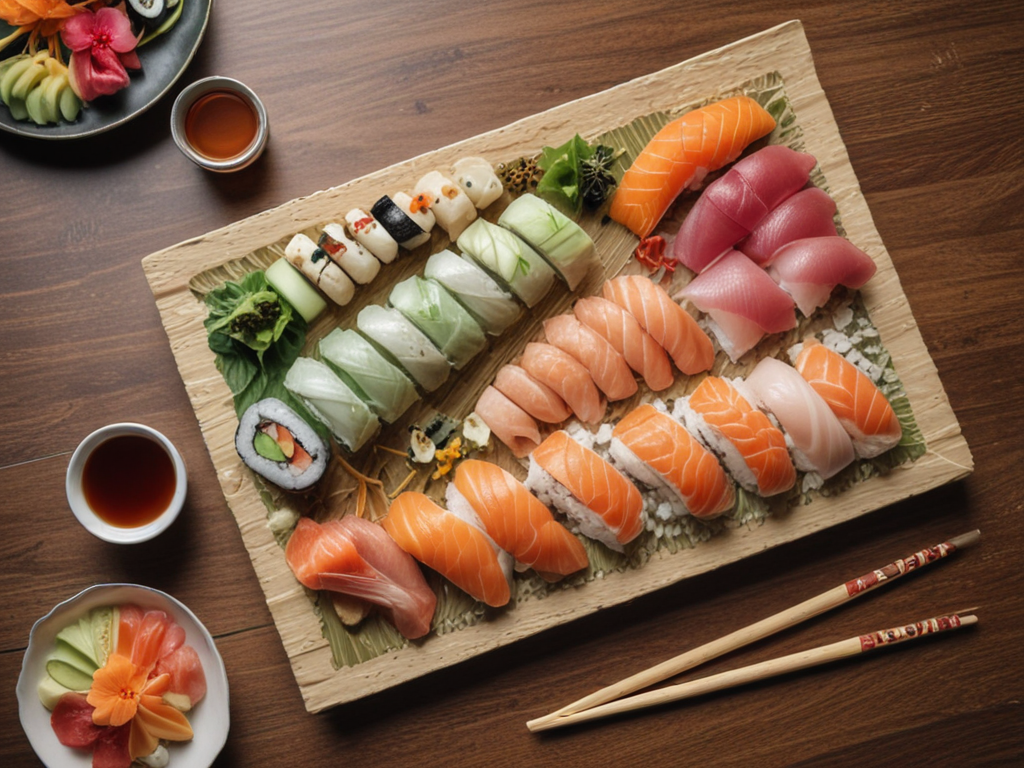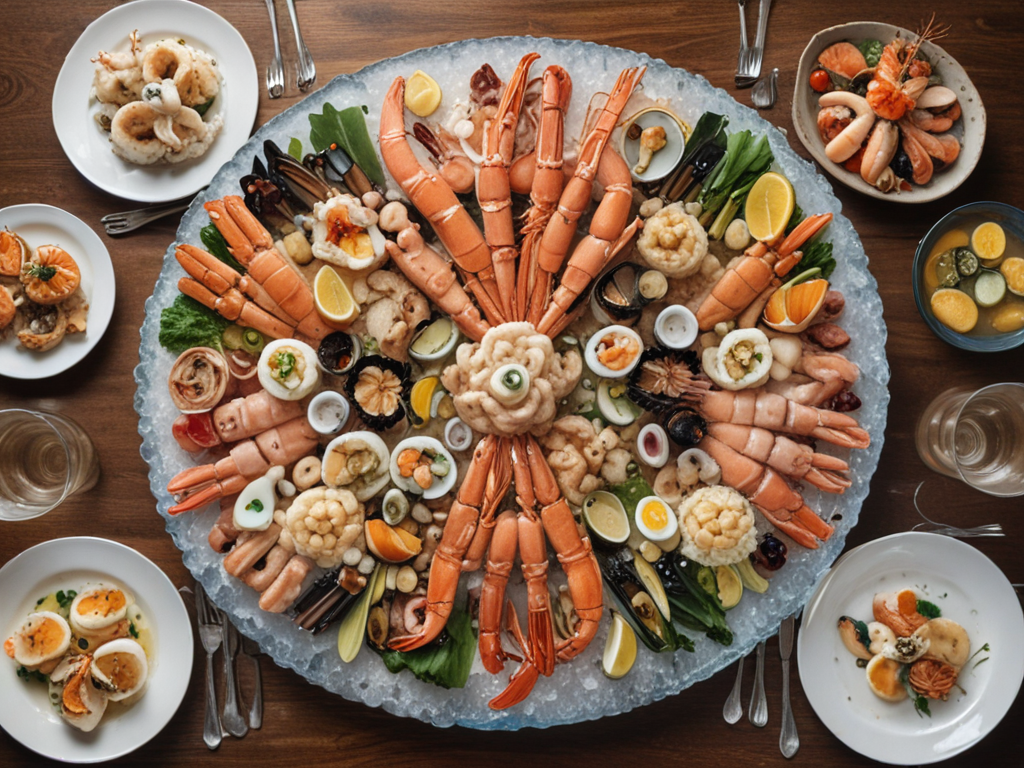
As the saying goes, ‘you are what you eat,’ and in the case of sushi, this sentiment couldn’t be more fitting. The intricate history and artistry behind this culinary tradition are as fascinating as the delicate flavors that grace each sushi roll. From its humble beginnings to its now global acclaim, sushi has captured the hearts and taste buds of many. The journey of sushi reveals a tapestry of cultural influences, innovative techniques, and a deep-rooted respect for the ingredients. The evolution of sushi is not just a culinary tale but a tribute to human creativity and adaptability.
Origins of Sushi
Exploring the origins of sushi reveals a rich history rooted in ancient Japan, where preservation techniques and rice cultivation converged to create this iconic culinary tradition. Ancient recipes for sushi date back to the Yayoi period (300 BC to 300 AD), where fish was fermented with rice to preserve it. This early form of sushi was not consumed but rather used to aid in the fermentation process. Over time, this method evolved, leading to the development of narezushi, where fish and rice were mixed together and allowed to ferment for months. Traditional ingredients like vinegared rice, fish, and seaweed became staples in sushi-making. The concept of using rice seasoned with rice vinegar to accompany fish originated in the Edo period (1603-1868). This period saw the emergence of nigiri sushi, a style still popular today. Understanding these ancient techniques and traditional ingredients illuminates the foundations of modern sushi as a culinary art form.
Evolution of Sushi Techniques
The historical foundation set by the origins of sushi in ancient Japan paved the way for a remarkable evolution of sushi techniques over the centuries, reflecting a continuous refinement and innovation in the art of sushi-making. Traditional methods combined with modern advancements have shaped sushi craftsmanship into a delicate and precise culinary practice. Here are four key aspects highlighting the evolution of sushi techniques:
- Nigiri Perfection: The meticulous art of crafting nigiri sushi showcases the skillful integration of vinegared rice and fresh fish, requiring years of practice to achieve the perfect balance of flavors and textures.
- Innovative Ingredient Pairings: Contemporary sushi chefs have pushed boundaries by experimenting with unconventional ingredients while still honoring the traditional flavors and techniques that define sushi.
- Knife Skills: The mastery of knife techniques in sushi preparation is vital, with chefs dedicating years to honing their precision and finesse in slicing fish and other ingredients.
- Rice Mastery: The importance of sushi rice cannot be overstated – achieving the ideal balance of seasoning and texture is a fundamental skill that sushi chefs continue to perfect through dedication to their craft.
Cultural Significance of Sushi
Sushi holds a profound cultural significance that transcends its culinary reputation, embodying a rich tapestry of traditions and customs deeply rooted in Japanese heritage. Traditional preparation of sushi is considered an art form, with skilled chefs dedicating years to mastering the techniques of selecting the freshest ingredients, expertly seasoning the rice, and delicately slicing the fish. Sushi etiquette plays a critical role in Japanese culture, emphasizing respect for the chef, appreciation for the food, and mindfulness in dining practices.
The cultural significance of sushi goes beyond its taste; it symbolizes harmony, balance, and simplicity. Each piece of sushi reflects the seasons, showcasing the beauty of nature and the importance of freshness. The act of sharing a meal of sushi with others fosters connections and strengthens relationships, highlighting the communal aspect of Japanese dining customs. Essentially, sushi is not just a dish; it is a representation of history, culture, and the art of culinary craftsmanship.
Global Spread of Sushi
The global popularity of sushi has reached impressive heights, with its influence extending far beyond its Japanese origins. As sushi made its way across the world, it underwent various adaptations to suit the diverse palates of international audiences. Here are some fascinating aspects of the global spread of sushi:
- Sushi Fusion: In different countries, sushi has been fused with local ingredients and culinary traditions, creating unique dishes like sushi burritos in the United States or sushi pizza in Canada.
- International Adaptations: Countries such as Brazil have embraced sushi wholeheartedly, incorporating local seafood like salmon and passion fruit into traditional sushi rolls.
- Sushi Appreciation: The growing appreciation for sushi globally has led to the emergence of high-quality sushi restaurants in unexpected corners of the world, showcasing the artistry and precision behind this culinary tradition.
- Diverse Palates: Sushi’s popularity has flourished due to its ability to cater to a wide range of tastes, from the simplicity of sashimi to the complexity of maki rolls filled with diverse ingredients.
Modern Innovations in Sushi
Amidst the ever-evolving culinary landscape, modern innovations in sushi continue to push the boundaries of traditional techniques and ingredients. One of the most prevalent trends in the sushi world today is the rise of fusion creations. Chefs are blending traditional Japanese flavors and ingredients with influences from other cuisines, resulting in unique and exciting sushi dishes. From sushi burritos to sushi burgers, these innovative creations cater to a diverse range of palates and preferences.
Additionally, sustainability practices have become increasingly important in the sushi industry. With concerns about overfishing and environmental impact on seafood stocks, many sushi restaurants are now sourcing their ingredients from sustainable fisheries. This not only guarantees the longevity of seafood populations but also promotes ethical and responsible dining practices. By incorporating sustainable sourcing methods into their menus, sushi chefs are not only creating delicious dishes but also contributing to the preservation of our oceans for future generations to enjoy.











